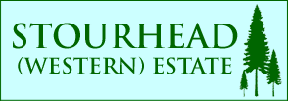| Species |
Characteristics |
Suggested Uses |
Ash
Fraxinus excelsior

|
A pale
hardwood with a distinctive grain. It shows large flame-like figuring on
back-sawn boards. It is very suited to steam bending. There is little to
distinguish the sapwood from the heartwood, and it has no natural
durability. |
Joinery
Flooring
Yurt-making |
Douglas Fir
Pseudotsuga menzei

|
This
timber is popular for structural applications for its strength and straight
grain. We can supply it in long lengths and large sections. Some of the
largest individual logs we have supplied weighed in the region of ten
tons! It is rated as moderately durable, although it is less durable than
larch and western red cedar. It has a distinct grain, with a marked
difference in colour between spring and summer wood. The grain tends to
show even on finished and painted timber, which can give an attractive
effect or be a problem, depending on what one is trying to achieve. |
Decking (preservative advisable)
Timber Framing
Joinery
Floor Boards |
Larch
Larix kaempferi

|
Larch
is the only deciduous conifer widely grown for timber, and is a strikingly
beautiful tree in spring and autumn. The timber is strong and moderately
durable. There is a long tradition on the continent of using larch for
external cladding of buildings. It is probably slightly less durable than
western red cedar, but its higher strength and resistance to knocks can be
an advantage. It is the favoured species for log cabin builders in this
country. |
External Cladding
Construction
Log cabins
Fencing<
|
Oak
Quercus robur
|

Strong and durable with a lovely grain. It is the classic English timber
with a wealth of tradition behind it. It is rated as durable, which makes
it the only UK grown timber, except sweet chestnut, suitable for use in
contact with the soil without treatment. Its durability comes from a very
high tannin content which does tend to leach out. Run off from this will
stain brick, stone or lead. It is best used with stainless steel fixings. |
External cladding
Garden landscaping
Floorboards
Joinery
Timber frame |
Scots pine
Pinus silvestris

|
If
timber is referred to as scots pine it implies that it is UK grown.
Imported wood of the same species (pinus silvestris) is known as
‘redwood’ in the trade. It has a distinct grain and large, but
generally sound, knots. It is not durable and requires preservative for
external use. |
Internal joinery
Floorboards |
Spruce
Picea sitchensis
Picea abies |
There
are two species of spruce, Norway or Sitka, with very similar timber.
Spruce is the ‘whitewood’ of the timber trade. It is a strong timber
used mainly for construction. It tends to be relatively knotty, with some
of the knots being ‘dead’ and prone to falling out. It is not durable
and requires preservative for external use. |
Construction
Internal cladding |
Sycamore
Acer pseudoplatanus

|
Sycamore is a maple (sometimes known as 'great maple') and
has a dense white timber with an even, indistinct grain. Like most maples it
is very hard and resistant to denting. |
Furniture
Worktops
Toy Making |
Western Red Cedar
Thuja plicata
|

An attractive, light weight timber with an aromatic smell which persists for
years after cutting. It is rated as moderately durable, and is probably
the most durable of the softwoods included in this category. Studies at Imperial
College (one of them using our cedar) have shown that the durability of home grown cedar
compares well with imported material. Western Red Cedar is very
stable, having about half the moisture movement of most softwoods.
It is not particularly strong, and is relatively soft. It is best used
with stainless steel fixings to prevent staining caused by the chemicals which gives it its durability. |
External Cladding
Decking
Conservatories and greenhouses
|
Western Hemlock
Tsuga heterophilla
|

A pale
timber with few knots and an attractive grain. It is not durable and is
not recommended for external use without treatment
|
Internal cladding
Timber framing
Flooring Joinery |


 Home
Products
Timber Info
Activities
Lettings
About
Contact
Home
Products
Timber Info
Activities
Lettings
About
Contact



 Home
Products
Timber Info
Activities
Lettings
About
Contact
Home
Products
Timber Info
Activities
Lettings
About
Contact
